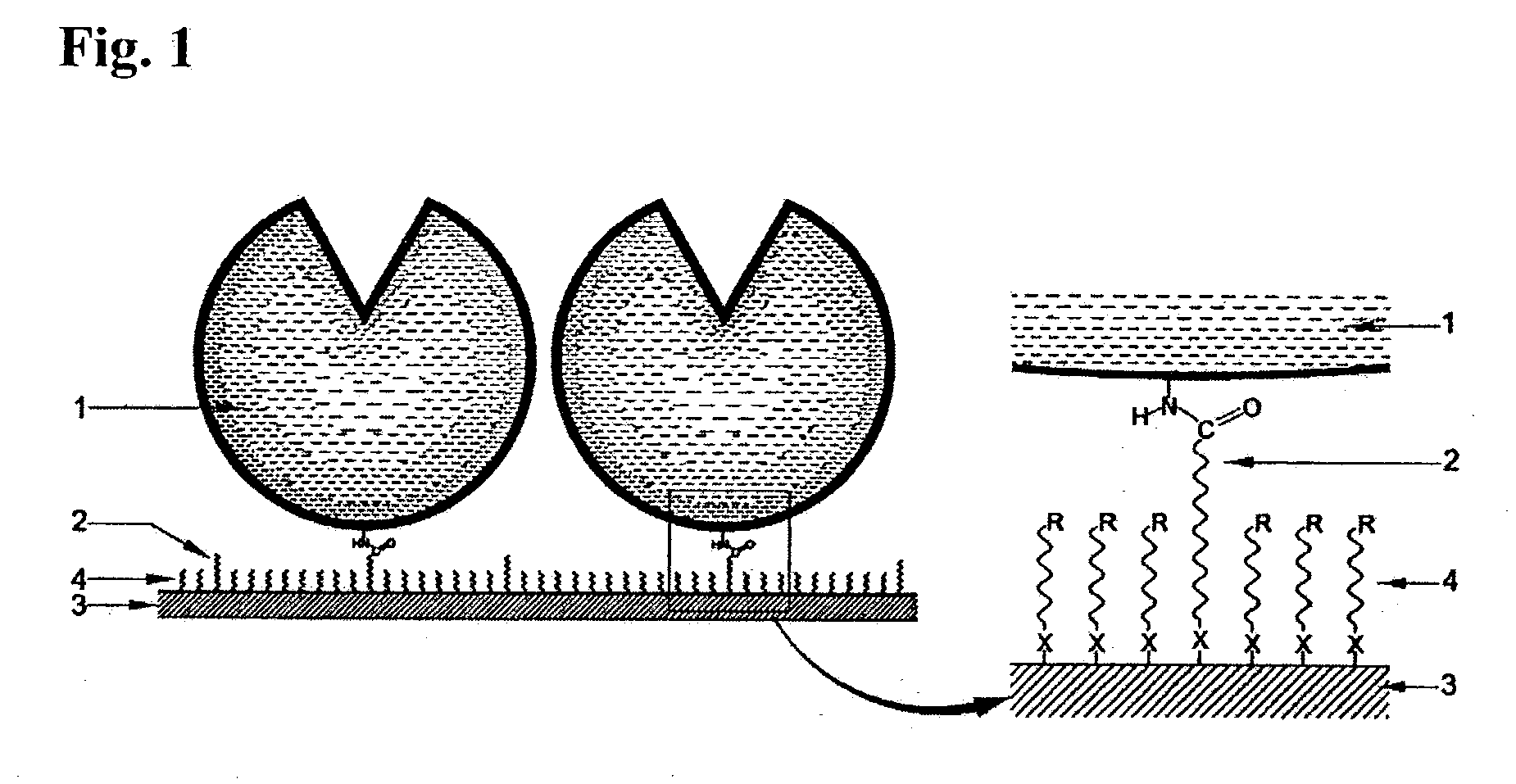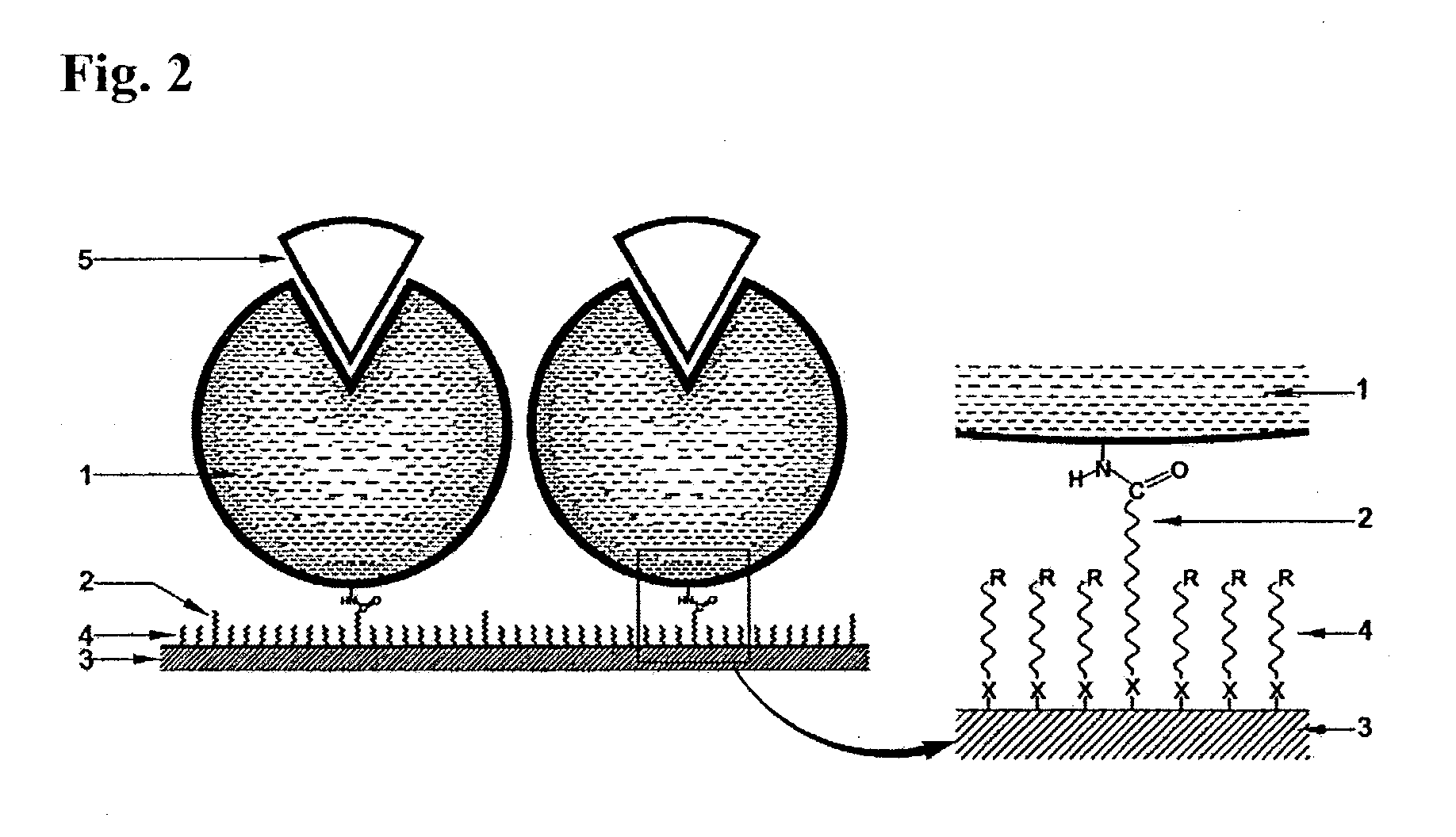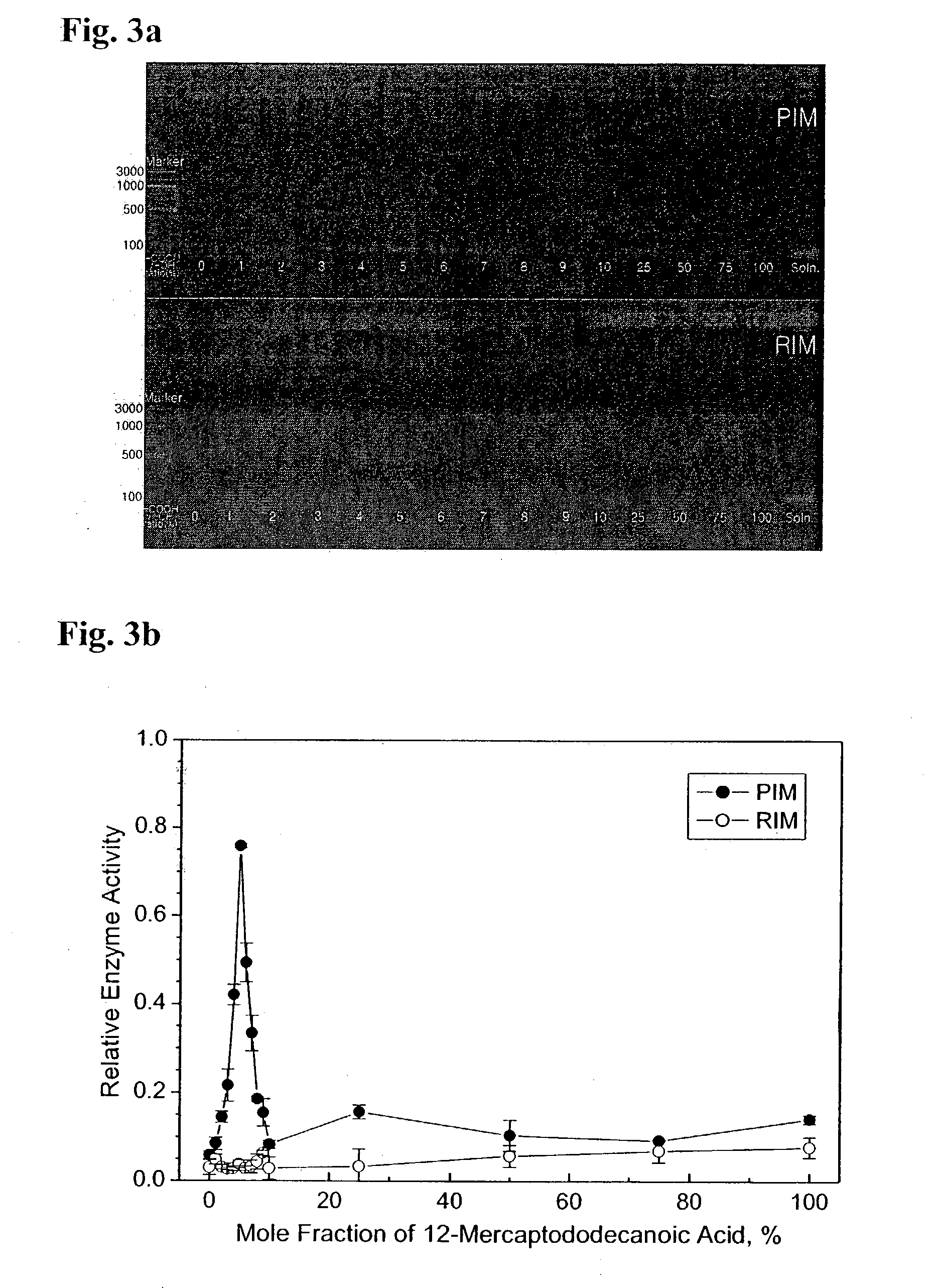Immobilized DNA polymerase
- Summary
- Abstract
- Description
- Claims
- Application Information
AI Technical Summary
Benefits of technology
Problems solved by technology
Method used
Image
Examples
example 2
Preparation of the Immobilized DNA Polymerase by the Prior Method--RIM (Random Immobilization Method)
[0093] In this example, immobilization was performed by using a Taq DNA polymerase whose active site was not masked instead of the Taq DNA polymerase masked with the partially double stranded DNA substrate used in Example 1. The other immobilization processes and reaction conditions were the same as in Example 1. The activated Au substrate was placed in the RIM enzyme solution to prepare an immobilized DNA polymerase.
example 3
Measurement of the Activity of the Immobilized DNA Polymerase
[0094] In order to measure the activity of the immobilized DNA polymerases prepared according to the methods of Examples 1 and 2, PCR was carried out, and the amount of the resulting amplified DNA was quantified. PCR was carried out in the Model 480 PCR thermal cycler of Perkin Elmer. The 65 bp ss-DNA (SEQ ID NO: 1) shown in Example 1 was used as a template, and the KS primer (SEQ ID NO: 2) and the SK primer (3'-CTAGGTGATCAAGATCT-5') (SEQ ID NO: 3) were used as primers for PCR. The volume of the PCR solution used was 50 .mu.l. 25 fmol of the 65 base ss-DNA (SEQ ID NO: 1), 10 pmol each of the KS primer (SEQ ID NO: 2) and the SK primer (SEQ ID NO: 3), and 1.0 nmol dNTP were added to the PCR solution. As a buffer solution, the pH 8.3, 10.times. buffer purchased from Perkin Elmer was used after diluting 10 times. The temperature cycle was set as follows:
[0095] Hot start step: 94.degree. C., 10 minutes
[0096] PCR cycle (20-45 cy...
example 4
Activity of the Immobilized Taq DNA Polymerase as a Function of the Mole Fraction of the Carboxyl Immobilization Reaction Group
[0098] The immobilization reaction was carried out in a phosphate buffer at pH 8.3 for 30 minutes at 50.degree. C. The immobilized Taq DNA polymerase was prepared according to Example 1 and 2 with 50 .mu.l of the immobilization reaction solution containing 0.75 pmol of Taq DNA polymerase. In the case of the PIM in Example 1, 1.5 pmol of the DNA substrate for active site protection added to the immobilization reaction solution. 0.75 pmol of the Taq DNA polymerase corresponds to the amount that can form three monolayers on the area of 3 mm.times.5 mm of the Au substrate used. 12-mercaptododecanoic acid was used as the linker, 6-mercapto-1-hexanol having a non-reactive group was used as a matrix molecule. 35 cycles of PCR were carried out and the resulting activity was then measured.
[0099] FIG. 3a shows the agarose gel fluorescence photograph of the PCR product...
PUM
| Property | Measurement | Unit |
|---|---|---|
| Fraction | aaaaa | aaaaa |
| Mole fraction | aaaaa | aaaaa |
| Mole fraction | aaaaa | aaaaa |
Abstract
Description
Claims
Application Information
 Login to View More
Login to View More - R&D
- Intellectual Property
- Life Sciences
- Materials
- Tech Scout
- Unparalleled Data Quality
- Higher Quality Content
- 60% Fewer Hallucinations
Browse by: Latest US Patents, China's latest patents, Technical Efficacy Thesaurus, Application Domain, Technology Topic, Popular Technical Reports.
© 2025 PatSnap. All rights reserved.Legal|Privacy policy|Modern Slavery Act Transparency Statement|Sitemap|About US| Contact US: help@patsnap.com



